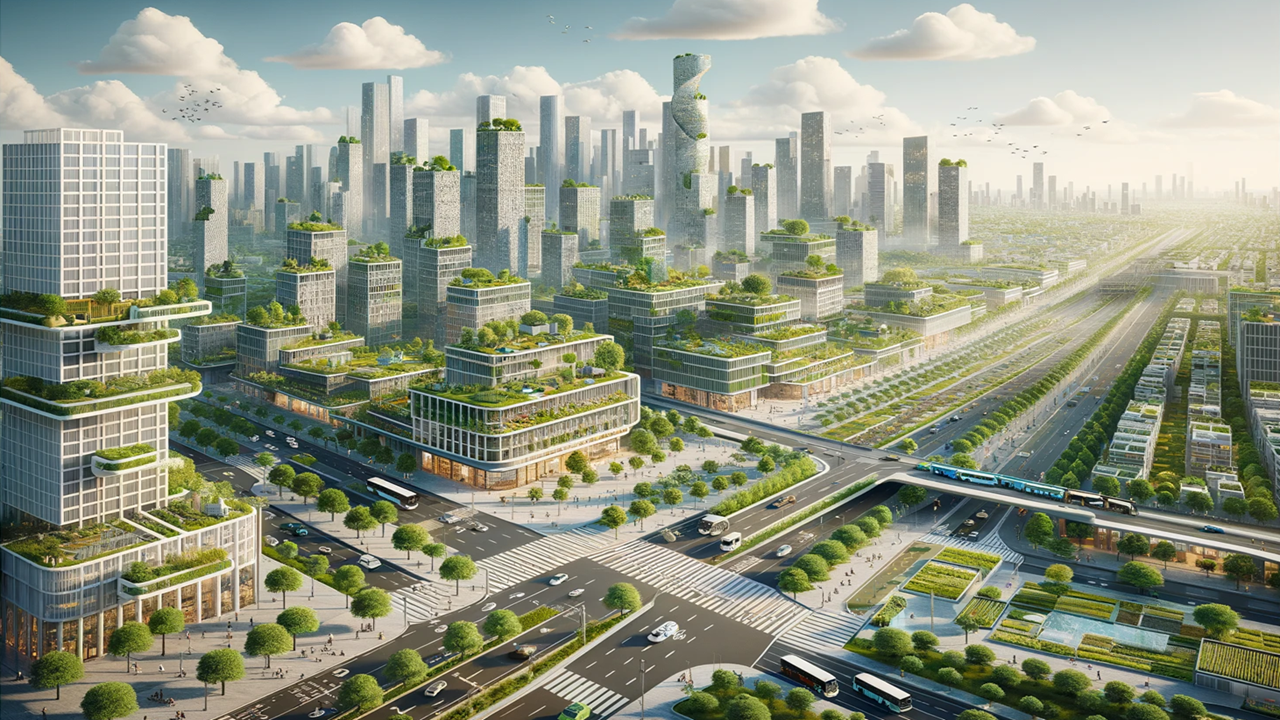Reimagining Urban Density: Pathways to Sustainable Metropolis Revival
This article discusses the vital strategies and innovations in urban regeneration for high-density cities, focusing on enhancing infrastructure, housing, and livability through sustainable practices. It highlights the importance of integrating green spaces, using sustainable materials, and including community needs in urban planning to ensure that cities remain vibrant and livable for future generations.

As cities around the globe swell with ever-increasing populations, the pressures on urban infrastructures, living spaces, and essential services escalate, necessitating a transformative approach to urban planning. "Reimagining Urban Density: Pathways to Sustainable Metropolis Revival" explores the concept of urban regeneration in high-density environments. This comprehensive discussion delves into innovative solutions aimed at revamping the urban landscape to enhance infrastructure, housing, and overall livability while striving to improve the quality of life through sustainable and integrated planning.
The Urgency of Urban Regeneration
In many of the world's metropolises, high-density living has led to significant challenges, including overcrowded housing, strained public services, deteriorating infrastructure, and escalating pollution levels. Urban regeneration seeks to tackle these issues head-on by rejuvenating aging infrastructures and re-envisioning urban spaces to meet modern needs and future sustainability goals.
Strategic Infrastructure Improvements
Central to the regeneration effort is the overhaul of existing infrastructures. This includes upgrading transportation networks to reduce congestion and improve accessibility, revitalizing public utilities to enhance efficiency, and implementing green infrastructure to manage urban runoff and mitigate environmental impacts. Cities like Tokyo and Singapore offer exemplary models where integrated transport and green infrastructure have significantly improved urban mobility and environmental sustainability.
Innovative Housing Solutions
Addressing the housing crisis in dense urban areas requires innovative thinking. Urban regeneration projects often incorporate mixed-use developments that combine residential, commercial, and recreational spaces. These developments are designed to optimize land use and enhance the quality of life for residents. Furthermore, initiatives such as the inclusion of affordable housing units help to ensure that regeneration efforts are inclusive and equitable.
Boosting Livability through Green Spaces
The integration of green spaces into urban design is another critical element of urban regeneration. Parks, rooftop gardens, and green corridors not only provide residents with much-needed recreational areas but also contribute to the ecological health of the city. These green spaces help to lower city temperatures, improve air quality, and provide habitats for urban wildlife, all of which enhance the overall livability of dense urban areas.
Sustainable Urban Practices
Sustainability is at the heart of modern urban regeneration projects. This involves the adoption of sustainable building practices, such as the use of energy-efficient materials and technologies, and the promotion of renewable energy sources. Additionally, sustainable urban planning emphasizes the need for community-centric spaces that foster social interaction and cultural expression, which are vital for the social well-being of city dwellers.
Challenges and Opportunities
While the potential benefits of urban regeneration are vast, these initiatives are not without challenges. Issues such as displacement of local residents, gentrification, and the high costs associated with redevelopment projects are significant concerns that need to be addressed. Effective urban regeneration requires not only innovative architectural and engineering solutions but also thoughtful policy-making that considers the socio-economic impacts on existing communities.
Global Inspirations and Local Actions
Examples of successful urban regeneration can be found worldwide. From the revitalization of the Docklands area in London to the transformation of the Cheonggyecheon stream in Seoul, these projects provide valuable lessons on integrating nature, technology, and community to reshape urban environments. Emulating such successes on a local scale requires tailored solutions that reflect the unique cultural, environmental, and social fabrics of individual cities.
Looking Forward
The future of urban regeneration in high-density environments looks promising but demands continuous innovation and collaboration across various sectors. As cities evolve, so too must the approaches to urban planning, ensuring they are resilient, sustainable, and inclusive. Engaging communities in the planning process and leveraging new technologies will be crucial in crafting urban spaces that not only meet today’s needs but are also adaptable to the future’s uncertainties.










